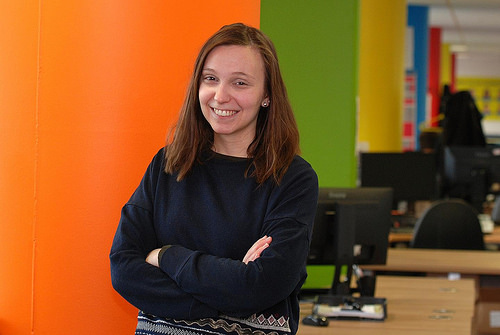
UNIVERSITY OF HUDDERSFIELD—In addition to its vast patchwork of languages, cultures and religions, the Indian Subcontinent also harbours huge genetic diversity. Where did its peoples originate? This is an area of huge controversy among scholars and scientists. A University of Huddersfield PhD student is lead author of an article that tries to answer the question using genetic evidence.
A problem confronting archaeogenetic research into the origins of Indian populations is that there is a dearth of sources, such as preserved skeletal remains that can provide ancient DNA samples. Marina Silva and her co-authors have instead focused on people alive in the Subcontinent today.
They show that some genetic lineages in South Asia are very ancient. The earliest populations were hunter-gatherers who arrived from Africa, where modern humans arose, more than 50,000 years ago. But further waves of settlement came from the direction of Iran, after the last Ice Age ended 10-20,000 years ago, and with the spread of early farming.
These ancient signatures are most clearly seen in the mitochondrial DNA, which tracks the female line of descent. But Y-chromosome variation, which tracks the male line, is very different. Here the major signatures are much more recent. Most controversially, there is a strong signal of immigration from Central Asia, less than 5,000 years ago.
This looks like a sign of the arrival of the first Indo-European speakers, who arose amongst the Bronze Age peoples of the grasslands north of the Caucasus, between the Black and Caspian Seas. They were male-dominated, mobile pastoralists who had domesticated the horse – and spoke what ultimately became Sanskrit, the language of classical Hinduism – which more than 200 years ago linguists showed is ultimately related to classical Greek and Latin.
Migrations from the same source also shaped the settlement of Europe and its languages, and this has been the subject of most recent research, said Marina Silva. She has tried to tip the balance back towards India, and her findings are discussed in the article titled ‘A genetic chronology for the Indian Subcontinent’ points to heavily sex-biased dispersals. It appears in the journal BMC Evolutionary Biology.
Authors of the new article include Professor Martin Richards, who heads the University of Huddersfield’s Archaeogenetics Research Group. Members of the group are also co-authors of another recent paper, which focuses in depth on just one of the lineages found in India, Origin and spread of mitochondrial haplogroup U7, which has just appeared in the journal Scientific Reports.
________________________________________
Archaeogeneticist Marine Silva from the University of Huddersfield pinpoints Indian origins using today’s populace. Credit: University of Huddersfield
_____________________________________________________
The group is the recipient of a £1 million award by the Leverhulme Trust, under its Doctoral Scholarships scheme. Portuguese-born Marina Silva is one of the first cohort. Her PhD work focuses on the Neolithic/Bronze Age transition in Eurasia, and is supervised by Professor Richards.
The research into Indian populations began while she was still based at the University of Porto, where she studied for her Master’s. Several of the other co-authors, principally Marisa Oliveira and Dr Luísa Pereira, are also affiliated with the University of Porto, and her external PhD co-supervisor, Dr Pedro Soares, now at the University of Minho, in Braga, is also a Visiting Researcher at Huddersfield.
Article Source: University of Huddersfield news release.
_____________________________________________________
Subscribe to Popular Archaeology Premium. Available on all laptops and mobile devices, and still the industry’s best value at only $9.00 annually.
___________________________________________
Travel and learn with Far Horizons.
____________________________________________
This richly illustrated issue includes the following stories: Recent findings shedding new light on the whereabouts of the remains of Philip of Macedon, father of Alexander the Great; how an archaeologist-sculptor is bringing bones of the dead back to life; archaeologists uncovering town life at the dawn of civilization; an exclusive interview with internationally acclaimed archaeologist James M. Adovasio about what makes the Meadowcroft Rockshelter prominent in the ongoing search for the first Americans; what archaeologists are finding at the site of the ancient city of Gath, the home town of the biblical Philistine giant, Goliath; and how scientists are redrawing the picture of human evolution in Europe. Find it on Amazon.com.








